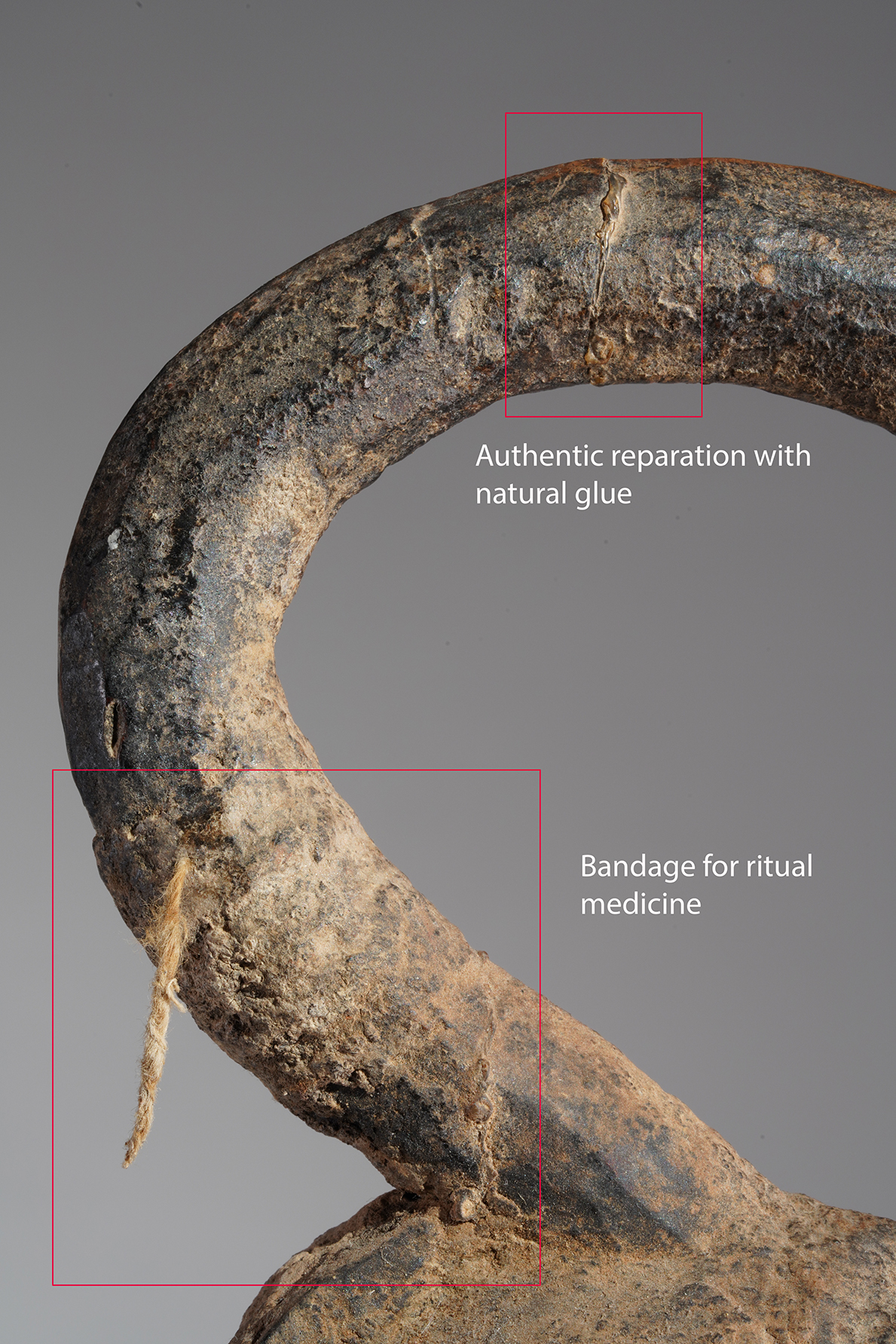wolfgang-jaenicke
A sculpture of a Bobo dancer
A sculpture of a Bobo dancer
Couldn't load pickup availability
A sculpture of a Bobo dancer, these sculptures seem to be the wooden interpretation of a Bobo dancer, the peculiar segmentations show the costume of a dancer, who wears a dress made of leaves.
The leaf costume worn by Bobo dancers is part of a complex ritual system closely tied to religious cosmology, agricultural cycles, and the belief in spiritual forces embedded in nature. The Bobo, an ethnic group primarily located in western Burkina Faso, use organic materials such as fresh leaves, grasses, and fibers to construct these costumes, which are worn in specific ceremonial contexts. The dancers are fully concealed, appearing anonymously, thereby shedding their individual identity and embodying supernatural forces. The rustling sound of the materials during movement adds an auditory dimension that enhances the symbolic presence of spirits.
Dances involving the leaf costume occur on particular ritual occasions, especially during agricultural ceremonies such as sowing and harvest festivals, initiation rites, communal cleansing rituals, and funerals of significant figures. In these settings, the dancers are not perceived as performers but as mediums for spiritual powers rooted in nature—agents of fertility, protection, and cosmic balance. The use of perishable materials emphasizes the ephemeral and cyclical nature of the rituals and reflects a worldview in which transformation and renewal are central.
Wooden sculptures explicitly depicting dancers in leaf costumes are rare within the classical corpus of Bobo art. The Bobo produce a wide range of abstract and stylized wooden masks that are used in ritual dances, often in combination with vegetal costumes, but the artistic focus lies on the mask itself rather than on the depiction of the wearer. This reflects a broader aesthetic and ontological principle wherein the performance—as the integration of mask, costume, movement, sound, and ritual setting—is considered the true artwork, not something to be permanently fixed in representational form. However, figural depictions with fringe-like elements, potentially alluding to leaf costumes, are found in some collections, particularly among neighboring groups such as the Bwa or the Senufo.
Since these impressive Bobo dances are often performed for tourists as well, we supposed that such figures can be understood within a touristic context—as objects intended to serve as reminders or representations of traditional dances. In this framework, wooden sculptures or other figurative representations depicting dancers in leaf costumes may not reflect traditional ritual usage, but rather function as commemorative or commercial items aimed at an external audience. These objects, while drawing on the visual vocabulary of ritual performance, may be produced specifically for the art market or for cultural exhibitions, thereby occupying a space between ethnographic authenticity and contemporary reinterpretation.
This represents a relatively under-researched field within ethnology, one that engages with the idiosyncratic dynamics generated at the intersection of two distinct cultural systems, the African and the Western. It touches upon questions of cultural translation, semiotic displacement, and the recontextualization of ritual forms in response to external observation and commodification. When traditional performances such as the Bobo leaf dances are adapted for touristic display, the objects and practices associated with them often undergo a process of semantic transformation. In this process, the ritual efficacy of the act may be subordinated to its visual or symbolic legibility for an external audience, giving rise to hybrid artefacts whose meaning is negotiated between local epistemologies and global expectations. Such phenomena complicate conventional dichotomies between ‘authentic’ and ‘staged’ tradition and call for analytical frameworks capable of accounting for the fluid, contingent nature of cultural expression under conditions of intercultural encounter.
See Roy, Christopher D., Art and Life in Africa, University of Iowa 1997
Hauenstein, Alfred, Die Bobo in Burkina Faso – Masken und Rituale, Munich 2004
Binkley, David A. and Darish, Patricia, African Masks – The Barbier-Mueller Collection, Geneva 1998
Imperato, Pascal James, African Folk Art: From the Collection of William and Bertha Teel, Boston 1999
Weight: 2,6 kg
ut when we examined the figure again to determine its size and weight, we saw that the figure displayed "bandages" for ritual medicine, a common practice among the Bamana, in rubbed-on areas. This is likely a clear indication that the figure originates from a ritual context and not, as we previously assumed, from the tourist market. Since our objects pass through several departments, "discoveries" are constantly occurring, and prima vista assessments based on photographs must be corrected. This is therefore a rare, authentic figure from a ritual context. wj






































